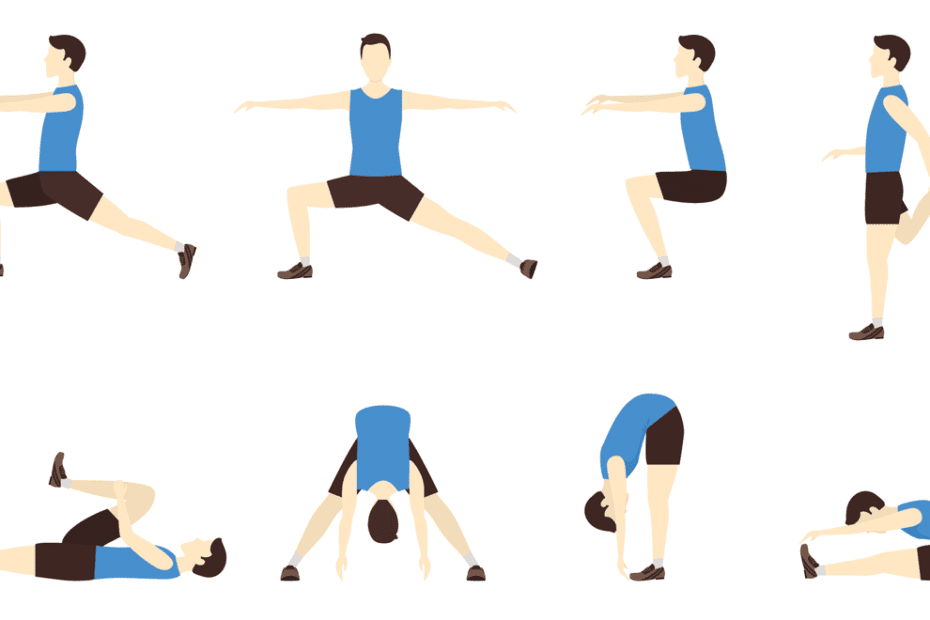When it comes to exercise, most of us are eager to jump right into the heart of the action. After all, we have limited time, and we want to make the most of it. However, there are two critical components of a workout that often get overlooked or rushed: warming up and cooling down. These two phases, often considered the bookends of a workout, play a pivotal role in ensuring the safety, effectiveness, and overall success of your exercise routine. In this article, we’ll delve into the importance of warming up and cooling down, provide you with a comprehensive guide on how to integrate these practices into your fitness regimen, and touch upon some sample exercises to get you started.
Benefits of Warming Up
Imagine a car engine in the dead of winter. If you start the car and immediately rev the engine to its maximum, you risk damaging the motor. Our bodies function similarly. Warming up before intense physical activity serves as a gentle ignition for our muscles and cardiovascular system, preparing them for the demands ahead. Here are the key benefits of a proper warm-up:
1. Enhanced Blood Circulation: Engaging in light aerobic activities such as brisk walking or jogging elevates your heart rate gradually. This increased heart rate pumps more blood to your muscles, delivering essential oxygen and nutrients. Improved blood circulation ensures that your muscles are ready for action and reduces the risk of strains or injuries.
2. Increased Muscle Temperature: As blood flow increases, your muscle temperature rises. This elevated temperature makes your muscles more pliable and efficient, decreasing the chances of muscle pulls and tears during more intense exercises.
3. Joint Lubrication: The synovial fluid in your joints acts as a lubricant, reducing friction during movement. A proper warm-up stimulates the production of this fluid, allowing your joints to move smoothly and decreasing the risk of joint-related injuries.
4. Mental Preparation: Warming up is not just about physical readiness; it’s about getting your mind in the game. It provides an opportunity to focus, mentally prepare, and set goals for your workout session.
Crafting an Effective Warm-Up Routine
A dynamic warm-up routine should be designed to gradually increase your heart rate and warm up your muscles. A well-structured warm-up can last anywhere from 5 to 10 minutes, depending on the intensity of your upcoming workout. Here’s a sample warm-up routine:
- Cardiovascular Activation: Start with 2-3 minutes of light aerobic exercise like brisk walking, light jogging, or cycling. This gently elevates your heart rate and prepares your cardiovascular system.
- Joint Mobility: Perform dynamic stretches that target major joints like your shoulders, hips, knees, and ankles. Swing your arms, rotate your hips, and perform leg swings to encourage a full range of motion.
- Muscle Activation: Engage specific muscles that you’ll be using during your workout. For example, if you’re planning a leg-focused workout, perform bodyweight squats or lunges to activate your lower body muscles.
- Gradual Progression: Gradually increase the intensity of your warm-up. If your main workout involves running, start with a light jog during the latter part of your warm-up to simulate the intensity of your exercise.
The Importance of Cooling Down
Just as warming up is essential for priming your body before exercise, cooling down is crucial for aiding recovery and preventing post-workout discomfort. The cooling-down phase allows your body to transition from high-intensity activity to a state of rest more smoothly. Here’s why cooling down matters:
1. Heart Rate Regulation: Cooling down gradually decreases your heart rate, preventing sudden drops in blood pressure that can lead to dizziness or lightheadedness.
2. Waste Removal: During exercise, metabolic waste products like lactic acid can accumulate in your muscles. A proper cool-down helps flush out these waste products, reducing the likelihood of muscle soreness.
3. Flexibility and Range of Motion: Incorporating static stretches during the cool-down phase promotes muscle relaxation and elongation. This helps maintain and improve flexibility, preventing muscles from becoming stiff or tight.
4. Mental Relaxation: Cooling down provides a window of time for mental relaxation and mindfulness. As you perform gentle stretches and focus on your breathing, you create a sense of tranquility after the exertion of your workout.
Creating a Soothing Cool-Down Routine
A cool-down routine should focus on gentle movements and static stretches that gradually bring your heart rate back to its resting state. Aim for a cool-down duration of about 5-10 minutes. Here’s a sample cool-down routine:
- Light Cardio: Start by slowing down your activity level. If you were running, gradually reduce your pace to a brisk walk.
- Static Stretches: Perform static stretches that target major muscle groups. Hold each stretch for 15-30 seconds and remember to breathe deeply while stretching.
- Hamstring Stretch: Extend one leg forward and gently lean forward from your hips, feeling the stretch in the back of your leg.
- Quad Stretch: Stand on one leg and grasp your opposite ankle, gently pulling it towards your glutes.
- Calf Stretch: Step one foot back, press your heel down, and lean forward to stretch your calf muscles.
- Triceps Stretch: Extend one arm overhead and bend your elbow, reaching your hand down your back between your shoulder blades.
- Deep Breathing: Conclude your cool-down with a few minutes of deep breathing. Inhale deeply through your nose, allowing your abdomen to expand, and exhale slowly through your mouth.
Tailoring Warming Up and Cooling Down to Your Needs
Remember, your warm-up and cool-down routines can be customized to suit your fitness level, workout intensity, and specific needs. If you’re embarking on a high-intensity workout, your warm-up might be more comprehensive. On days when your exercise routine is lighter, a shorter warm-up and cool-down might suffice. Listen to your body and adjust accordingly.
